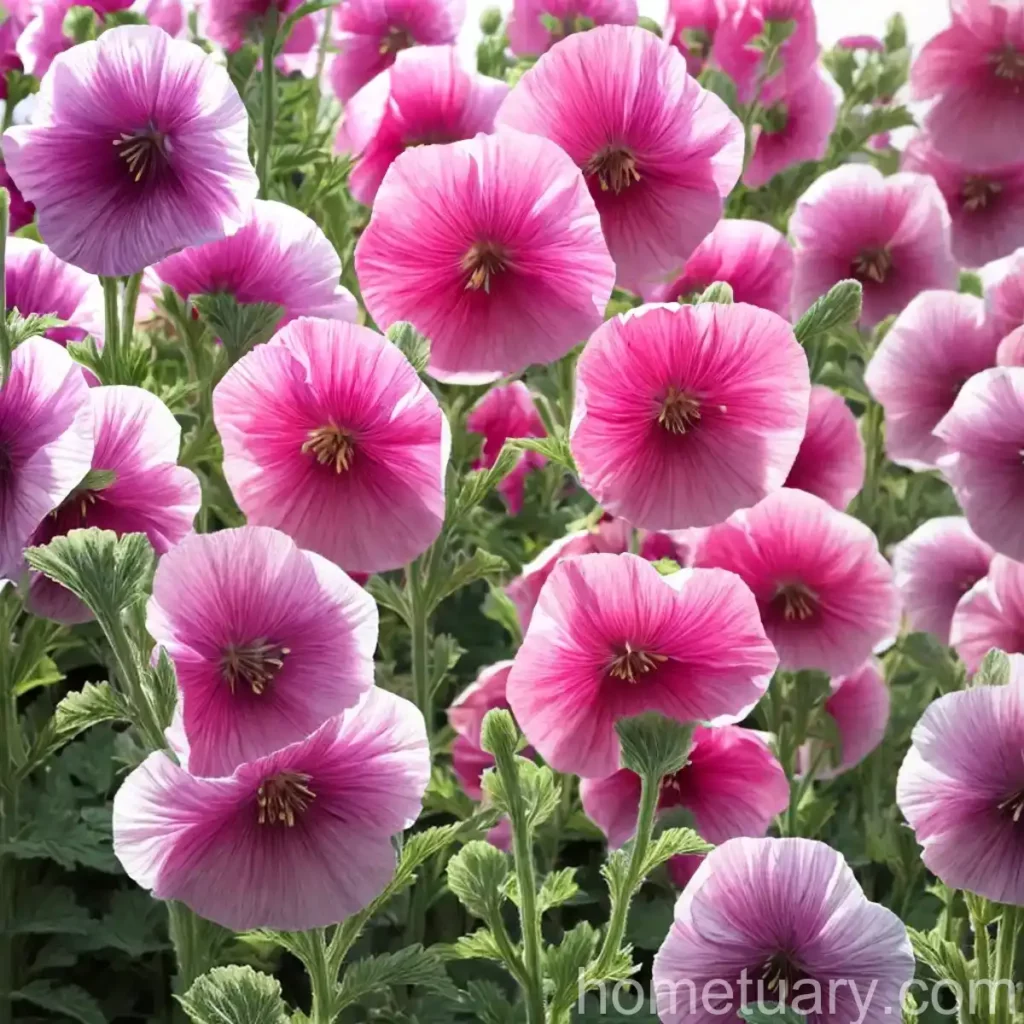Understanding Hollyhock (Alcea rosea (single)) – A Complete Plant Guide
What is the Hollyhock (Alcea rosea (single))?
The hollyhock (Alcea rosea (single)) is a stunning biennial or short-lived perennial plant that belongs to the Malvaceae family. This elegant plant is widely known for its tall stature, vibrant flowers, and the ability to attract pollinators, making it a popular choice for gardens and landscapes. Hollyhocks are native to Asia and Eastern Europe and have been cultivated for centuries due to their ornamental value and medicinal properties.
Key Takeaways
- Botanical name: Alcea rosea (single)
- Family: Malvaceae
- Plant type: Biennial or short-lived perennial
- Native to: Asia and Eastern Europe
- Known for: Vibrant flowers, tall stature, and attractiveness to pollinators
Culture of Hollyhock (Alcea rosea (single))
Understanding the culture and specific requirements of hollyhocks is essential for successfully growing and maintaining these beautiful plants.
Uses
- Ornamental: Hollyhocks are primarily grown for their ornamental value, adding a stunning display of color to gardens, borders, and landscape designs.
- Medicinal: Historically, hollyhocks have been used in traditional medicine for their potential medicinal properties, such as soothing properties for skin irritations and cough relief.
Water
- Hollyhocks prefer moderate to regular watering, especially during dry spells or periods of high heat. It’s important to ensure that the soil is well-draining to prevent waterlogging, which can lead to root rot.
Sunlight
- Full sun is ideal for hollyhocks. These plants thrive in bright sunlight and may not perform as well in shaded areas. Providing at least 6-8 hours of direct sunlight is crucial for healthy growth and abundant flowering.
Fertilizer
- Applying a balanced, all-purpose fertilizer in the early spring can help support the growth and blooming of hollyhocks. Additionally, incorporating organic matter into the soil during planting can provide essential nutrients for the plants.
Soil
- Well-draining, fertile soil is essential for hollyhocks. A loamy soil with good moisture retention and sufficient aeration is ideal for supporting healthy root development and overall growth.
Pruning
- Deadheading spent flowers can promote continuous blooming and prevent the plant from putting energy into seed production. Additionally, removing any diseased or damaged foliage can help maintain the plant’s overall health.
Propagation of Hollyhock (Alcea rosea (single))
Understanding the propagation methods for hollyhocks allows gardeners to expand their plant collection and cultivate new specimens.
Propagation Methods
- Seeds: Hollyhocks can be propagated from seeds, which can be collected from mature seed heads for sowing in the following growing season.
- Division: Established hollyhock plants can be divided in early spring or fall, providing an opportunity to create new plants from existing ones.
Container Popularity
- While hollyhocks are commonly grown in garden beds and borders due to their height, they can also thrive in large containers, particularly when space is limited or to add height and color to container gardens.
Common Diseases
- Hollyhocks may be susceptible to certain diseases, including rust, powdery mildew, and leaf spot. Proper cultural practices, such as adequate spacing, good air circulation, and vigilant monitoring, can help prevent and manage these issues.
Disease Diagnosis
- Monitoring the appearance of leaf discoloration, powdery coatings, or lesions on the foliage can help diagnose and address potential diseases affecting hollyhocks. In some cases, seeking professional advice or using appropriate fungicides may be necessary to manage serious infections.
Common Pests
- Aphids, caterpillars, and Japanese beetles are among the common pests that may target hollyhocks. Regular inspection of the plants and the use of natural predators or insecticidal solutions can help control pest populations.
Botanist’s Tips for Growing and Caring for Hollyhock (Alcea rosea (single))
Gathering insights from botanical experts can provide valuable guidance for cultivating and maintaining healthy hollyhock plants.
Fun Facts
- The flowers of hollyhocks are not only visually appealing but also have folklore and symbolic associations in various cultures, representing resilience, abundance, and positivity.
- Hollyhocks can attract a wide range of pollinators, including butterflies, bees, and hummingbirds, contributing to the overall biodiversity of a garden or landscape.
Botanist’s Tips
- Support: Due to their vigorous growth and height, providing support, such as stakes or trellises, can help prevent hollyhock stems from bending or breaking.
- Mulching: Applying a layer of organic mulch around the base of hollyhock plants can help retain moisture, regulate soil temperature, and inhibit weed growth.
- Companion Plants: Pairing hollyhocks with other sun-loving perennials and annuals can create visually appealing combinations and support the well-being of adjacent plants through beneficial interactions.
Links to External Resources
- Royal Horticultural Society – Growing Hollyhocks
- University of Florida IFAS Extension – Hollyhock Diseases
By gaining a comprehensive understanding of the culture, propagation, and care of hollyhocks, individuals can cultivate and enjoy these stunning plants, while contributing to the overall beauty and biodiversity of gardens and landscapes. Furthermore, exploring their historical uses, folklore, and symbolic significance adds a captivating layer to the appreciation of hollyhocks within horticultural and cultural contexts.















